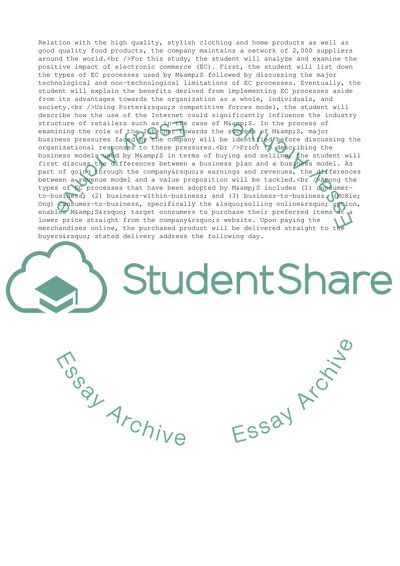Cite this document
(MARKS & SPENCERA NEW WAY TO COMPETE Case Study Example | Topics and Well Written Essays - 2500 words, n.d.)
MARKS & SPENCERA NEW WAY TO COMPETE Case Study Example | Topics and Well Written Essays - 2500 words. https://studentshare.org/business/1715690-marks-spencera-new-way-to-compete
MARKS & SPENCERA NEW WAY TO COMPETE Case Study Example | Topics and Well Written Essays - 2500 words. https://studentshare.org/business/1715690-marks-spencera-new-way-to-compete
(MARKS & SPENCERA NEW WAY TO COMPETE Case Study Example | Topics and Well Written Essays - 2500 Words)
MARKS & SPENCERA NEW WAY TO COMPETE Case Study Example | Topics and Well Written Essays - 2500 Words. https://studentshare.org/business/1715690-marks-spencera-new-way-to-compete.
MARKS & SPENCERA NEW WAY TO COMPETE Case Study Example | Topics and Well Written Essays - 2500 Words. https://studentshare.org/business/1715690-marks-spencera-new-way-to-compete.
“MARKS & SPENCERA NEW WAY TO COMPETE Case Study Example | Topics and Well Written Essays - 2500 Words”. https://studentshare.org/business/1715690-marks-spencera-new-way-to-compete.


